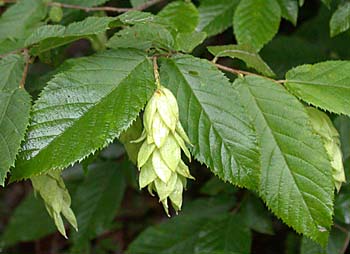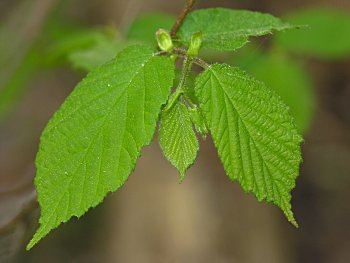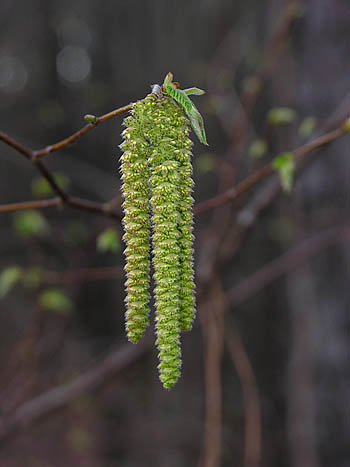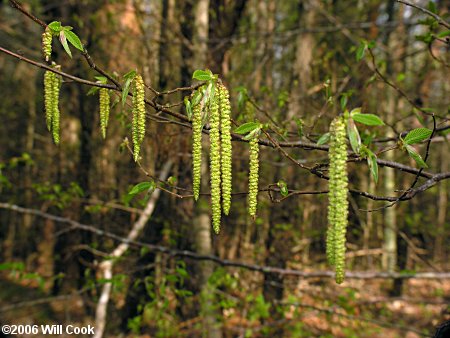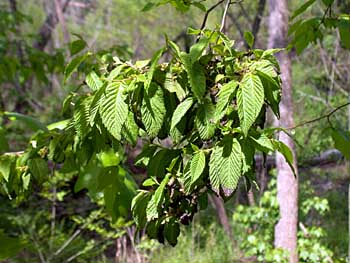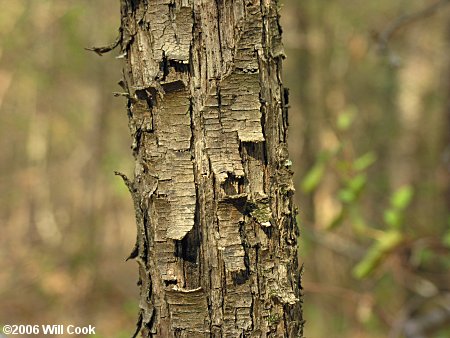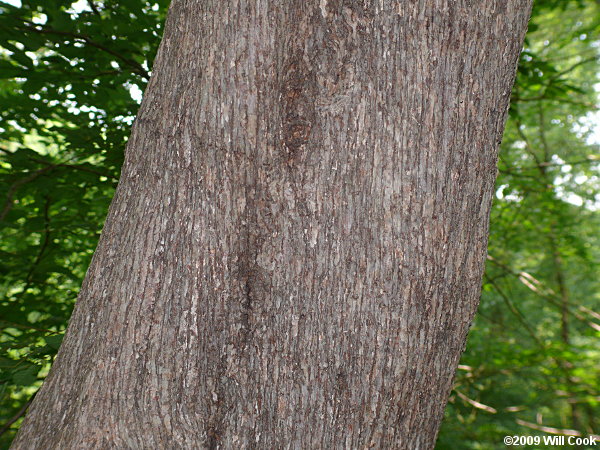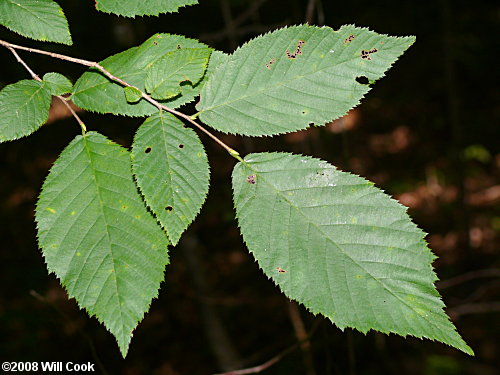
Hophornbeam is a fairly common understory tree, similar to the related American Hornbeam (Carpinus caroliniana) but with rough bark and hop-like fruiting clusters.
Jones Co., NC 7/18/2008.
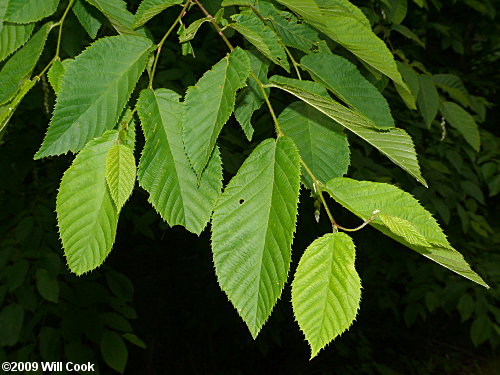
Hophornbeam is especially common in rocky woods and in areas with basic bedrock.
Granville Co., NC 5/16/09.
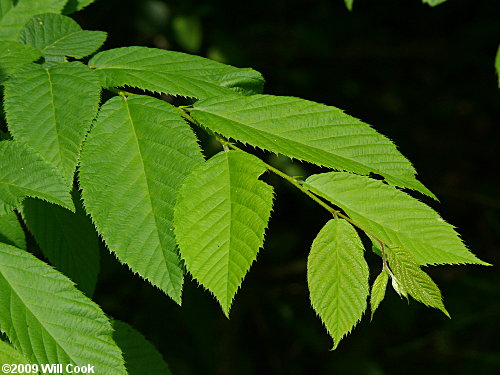
Granville Co., NC 5/16/09.
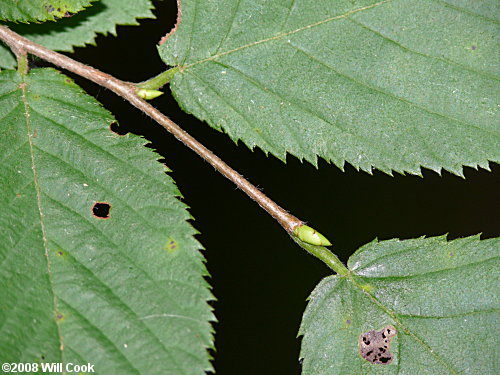
The leaves are similar in shape to the smooth leaves of American Hornbeam, but are hairy. Another common confustion species is American Hazelnut (Corylus americana).
Jones Co., NC 7/18/2008.
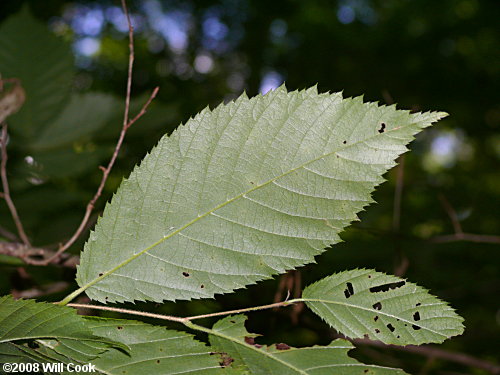
Leaf undersides.
Jones Co., NC 7/18/2008.
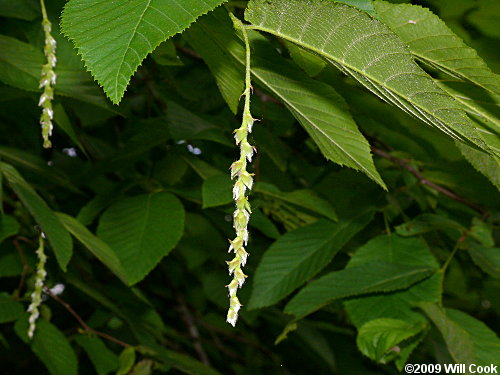
Female flowers apear in May.
Granville Co., NC 5/16/09.
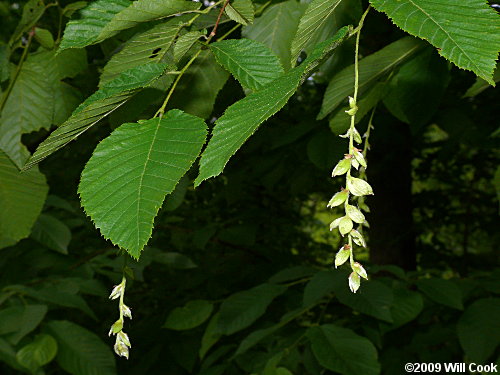
Granville Co., NC 5/16/09.
